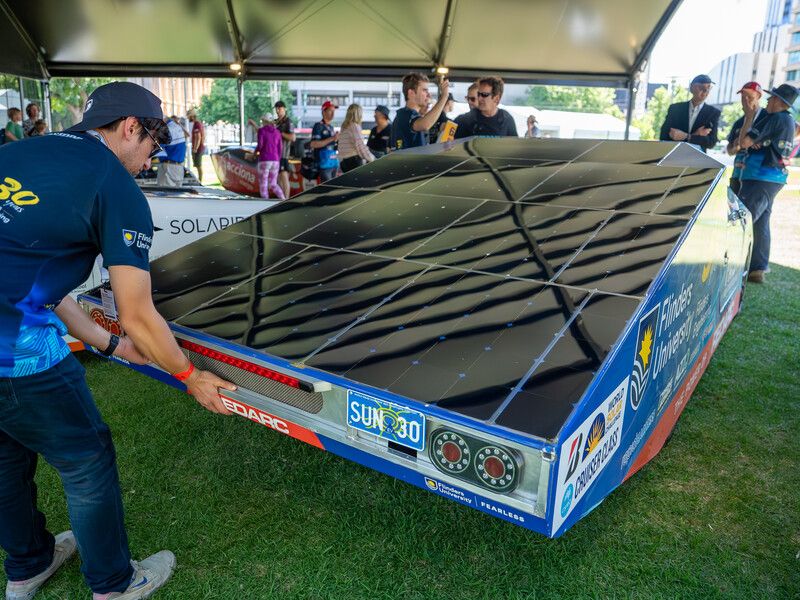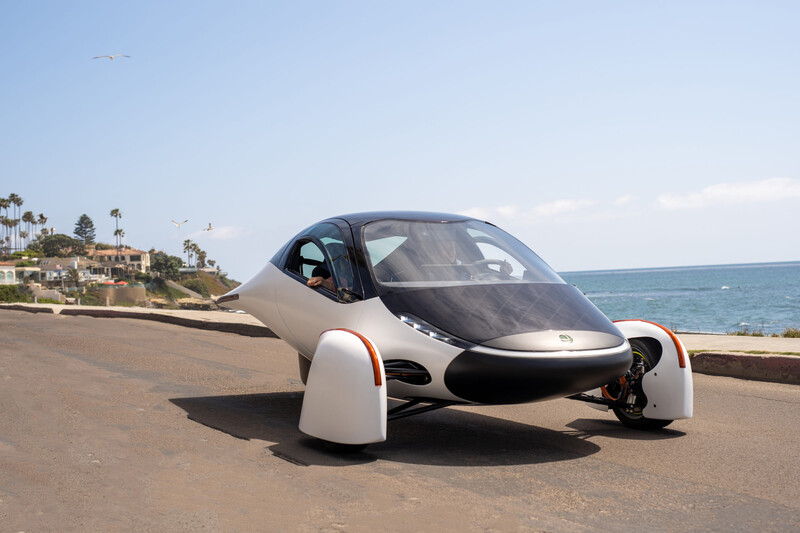Solar Racing Across the Outback

The Australian Outback. Here, the sun beats down with an unrelenting intensity, reaching 39 degrees Celsius during the day.
It’s also here, every few years, that a different kind of motor race unfolds.
No roar of engines. No polluting exhaust fumes. Just the quiet hum of electric motors and the determined glint in the eyes of the drivers.
This is the Bridgestone World Solar Challenge, which takes place in some of the world’s most extreme conditions.
For us, it’s more than just a race. It’s a testament to the potential of solar energy to power our future.
A 3000 Kilometer Race
Every two years, engineering teams from around the world gear up for the World Solar Challenge.
Their aim? To race electric solar-powered cars from Darwin in the Northern Territory, all the way to Adelaide in South Australia.
That’s a huge distance, speeding over 3000 kilometers.
And the latest race in October 2023 – the first post-covid event – saw 38 teams compete.
Each team spent up to ten months designing and building the electric vehicles. They’re pushing the limits of solar technology and helping to shape the future of sustainable e-mobility.
Propelled to Victory
How is it possible for cars to race thousands of kilometers solely on sunshine?
The answer lies across the hood of these sun-powered vehicles: the solar cells.
And in the latest race, Maxeon high-performance cells became the heroes hidden in plain sight.
The cells propelled two teams to first place – Australia’s Sunswift Racing in the Cruiser category, and the Innoptus Solar Team from Belgium in the Challenger category.
The winners spoke about how Maxeon technology put them in pole position.
Maxeon Cells Selected in 90% of the Cars
It’s not all about crossing the finish line in first place.
Maxeon cells were chosen by 90% of the teams, and the power behind many of the other vehicles at the World Solar Challenge 2023.
It’s a test of Maxeon technology in some of the harshest conditions.
Plus, a glimpse into the future of renewable energy-fueled cars for everyday use, such as Aptera’s SEVs.
Maxeon Cells’ advantage
How did those flexible silicon squares help to win the race?
It’s down to their powerhouse efficiency and resilience.
Maxeon solar cells have an industry-leading conversion rate of over 25%, meaning they squeeze more energy from every bit of sunlight.
Even in the searing temperatures of the Australian Outback.
And this is a place where both heat and sand would be a major challenge for ‘standard’ solar cells.
But Maxeon cells have a unique back surface field layer. Not only this layer provides mechanical strength to the silicon cells, it also keeps them cool through a more even heat distribution.
That means more sun converted into energy and propulsion power.
The demanding condition of the race also challenges the physical toughness of the solar cells to withstand mechanical impacts
‘Standard’ solar cells when cracked due to impacts may cease to function altogether. This is where the Maxeon cells, with their unique architecture, will continue to function producing energy and keep the cars going.
Maxeon cells are also flexible, able to fit into more aerodynamic designs on the vehicles making the solar array more conforming to the shape of the racecars
A Step Closer to Sustainable e-mobility
We continue to be inspired by solar pioneers around the world, and the next generation of students and engineers who worked on the World Solar Challenge.
We’re all taking steps closer to more sustainable e-mobility, as the technology powering solar-powered cars improves year after year.
The next race is set for 2025.

